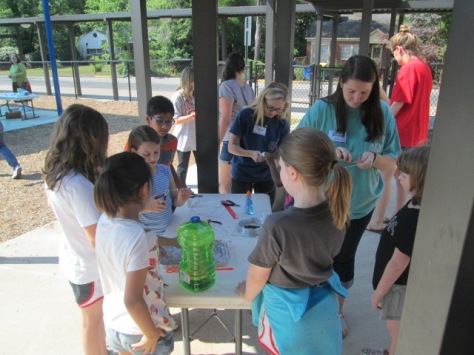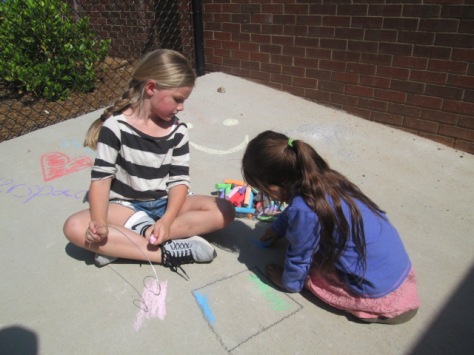
Our makerspace has once again cranked up for the 2018-19 school year. Once again, I’m collaborating with Gretchen Thomas and her class of over 30 undergraduates from the University of Georgia. Every year, Gretchen and I meet to think about what our open makerspace time might look like, ,and every time we make some changes and try something new.

Our idea for this year is offer specific themes around materials or tools rather than try to squeeze in so many different things in a short amount of time.

For September, we’ve chosen cardboard as our material. Across 3 weeks, we hope to offer 3 short-term challenges using cardboard. One of those challenges will be a “making with a cause” challenge.
- Week 1: Design a hat. This can be interpreted however students want.
- Week 2: Making with a Cause. Make an award. Students will choose someone who deserves an award. Make the award. Give the award to that person with an explanation of why they deserve the award.
- Week 3: Make a puppet. Use cardboard tubes to create unique puppets and hopefully begin storytelling with them.

For the second open makerspace, we know that there will be students who aren’t interested in the short-term options and want to branch out to their own projects that take longer than 1 or 2 sessions. For these students, we will offer them a space to plan, design, and create their own inventions that have a purpose. We wanted to keep this option open ended, but encourage students to develop something using cardboard that actually has some sort of function/purpose.

In each Tuesday/Thursday session, groups of UGA students come to work alongside students. They come in 30-minutes waves so that each round of students has me and UGA students to support them. I’ve put a bit more structure on the front end of makerspace this year. Students check-in with a UGA student and then sit on the carpet. I offer a quick intro to what we are making and connect it to a book. For cardboard, we used Cardboard Kingdom by Chad Sell. Then, students move to tables to do some planning before they start grabbing cardboard and cutting.

This week, we launched into the first challenge of making a hat. Students had access to cardboard, Makedo safe saws, scissors, duct tape, and coloring supplies. Students sketched hats onto cardboard and started sawing. There was a learning curve on the best strategies for sawing. Some students were more patient than others with the cutting process. Be warned! It was very loud and very messy. All adults circulated around to support as many students as possible.
At the end of session 1, students labeled all of their pieces of cardboard and we stored them in the makerspace.

For session 2, we spread all of the pieces out so that students could locate their cardboard to start again.
I loved seeing the hats that students came up with in such a short amount of time. At dismissal, I could see the cardboard hats parading down the halls and lots of students were curious about where they came from. Many students needed more than 2 sessions to finish. Some chose to take the materials with them to finish at home. Others left their hats behind to continue working on next week.
I have a lot of questions about how this is all going to work. It’s fast-paced and a challenge to get one group finished and cleaned up before the next group comes in. It’s also a mess of cardboard dust and bits, and I hate leaving that for our custodians. However, we’re pressing forward, expecting the miraculous, and making changes as needed along the way.



















































